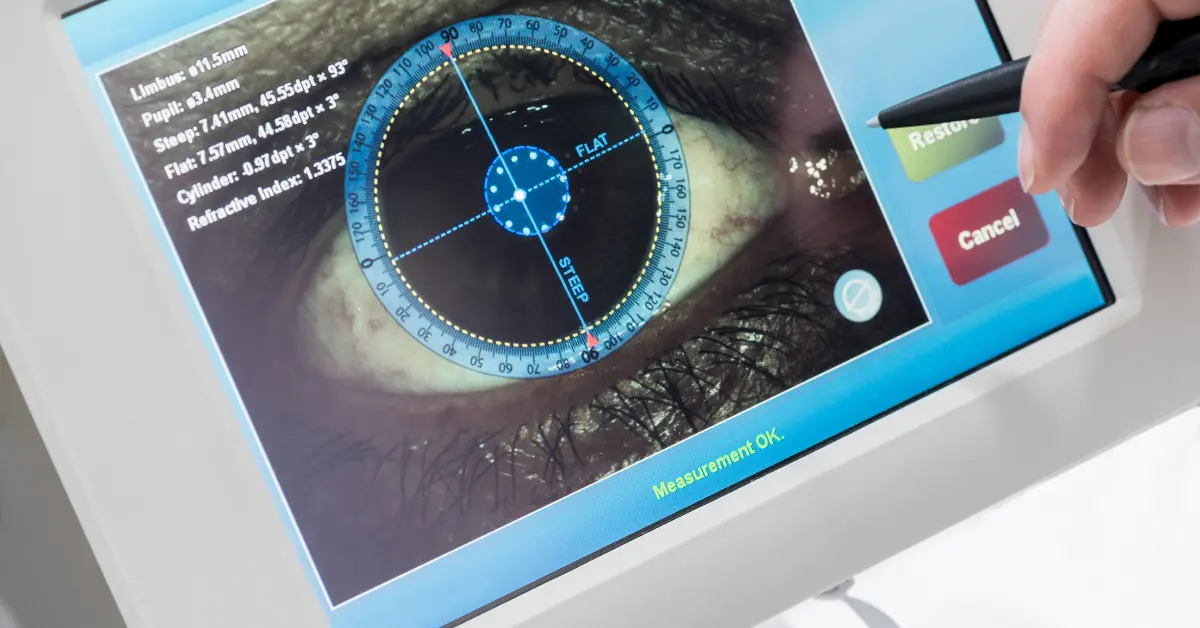Neurotrophic Keratitis: Know the Stages
Neurotrophic keratitis (NK) is a degenerative cornea disease that makes it less sensitive or insensitive.
In NK, the trigeminal nerve gets impaired.
Loss of corneal sensation, either or, can lead to Epithelial keratopathy and Stromal ulceration.
In the worst cases, it can also lead to corneal perforation.
It is a prediction that the disease impacts 6% of Herpetic Keratitis patients.
There is a 12.8% instance of Herpes Zoster Keratitis.
Read the article to know the possible treatments and stages of Neurotrophic keratitis.
Neurotrophic Keratitis Stages
Patients with Neurotrophic keratitis usually don’t complain of any symptoms.
This happens in patients if they lack corneal sensation. Yet, they may face redness in the eyes and blurring of vision. Although these issues occur occasionally.
Blurring vision can occur because of corneal edema, persistent epithelial defects, or scarring.
Herpetic infections state prior erythema, dolor ocular, or cutaneous blistering or scarring.
En hallmark of this disease is absent or less corneal sensation.
Según Mackie’s classification, Neurotrophic Keratitis is a classification of three stages.
Epithelial changes
Corneal epithelial alterations characterize the first stage.
It changes when the corneal epithelium is dry and cloudy, when superficial punctate keratopathy is present, or when the cornea is swollen.
Persistent epithelial defects
The second stage is often found in the top half of the cornea.
Most of the time, there is an area of poorly attached, clear, and swollen epithelium. It is present around the epithelial defect.
It can detach on its own, causing the hole to get bigger.
This is why epithelium doesn’t heal well, and the hole edges get smooth.
With an inflammatory reaction, you may also see the folds of the descemet’s membrane and the swelling of the stroma.
Corneal ulcer

Este stage has the involvement of the stroma and corneal ulcer. This leads to perforation and melting of the stroma.
Melting and holes in the cornea can be caused by misusing topical steroids or secondary infections.
Diagnóstico
Neurotrophic keratopathy is diagnosed without difficulty. It is through the patient’s medical history and physical examination.
You should be suspicious for other reasons if you have an ulcerated cornea. It includes infections and immunological aetiologies.
En Japanese Journal of Ophthalmology article reports patients with persistent epithelial defects due to Neurotrophic Keratopathy.
Patients got treatment for 28 days, where P-derived peptide (FGLM)-amide and insulin-like growth factor (IGF-1) were given.
Complete epithelial resurfacing was seen in eight patients with no adverse effects.
Neurotrophic Keratitis Treatment
Early diagnosis, treatment, and careful monitoring are necessary for Neurotrophic Keratitis patients.
It helps in achieving epithelial healing and prevents the progression of corneal damage.
Preservative-free artificial tears may help improve the corneal surface.
It is helpful at all stages of disease severity.
Topical antibiotic eye drops are recommended at the second and third stages.
There are surgical treatments as well, reserved for refractory cases. They include partial or total tarsorrhaphy.
Conjunctival flap, amniotic membrane transplantation, and Botulinum A toxin injection are some surgical treatment options.

Etapa 1
Artificial tears, ointments free of preservatives, and punctal occlusion help treat.
Etapa 2
It is necessary to address epithelial defects to prevent corneal ulcers. It helps in further development and enhances healing.
Antibiotic drops are added to preservative-free artificial tears as a precaution. A lateral tarsorrhaphy indicates the fastening of the epithelial defect.
Etapa 3
It is the usage of therapeutic contact lenses and amniotic membrane transplantation.
Corneal perforations can be fixed with a Conjunctival flap. Cyanoacrylate glue, lamellar or penetrating keratoplasty is also helpful.
Conclusión
In conclusion, treating Neurotrophic Keratitis poses a big problem for ophthalmologists.
Various medicinal and surgical treatments are there to prevent corneal perforation.
These surgical techniques can protect the eye.
Preguntas frecuentes
What causes Neurotrophic Keratitis?
Neurotrophic keratitis is a degenerative corneal disease caused by corneal sensory innervation dysfunction. It is characterized by decreased or absent corneal sensation. This leads to an epithelial breakdown. It leads to corneal ulceration, melting, and perforation.
What is the most common condition associated with neurotrophic keratitis?
The most common ocular conditions associated with NK are herpes keratitis (zoster and simplex) and topical anesthetic abuse. Chemical and physical burns, contact lens abuse, topical drug toxicity, irradiation of the eye or adnexa, and corneal surgery are all causes of corneal opacification.
How is neurotrophic keratitis diagnosed?
NK requires a careful investigation of clinical ocular and systemic history. It needs a comprehensive eye examination and an evaluation of corneal sensitivity.
WowRx utiliza sólo fuentes de alta calidad al escribir nuestros artículos. Por favor, lea nuestro política de información sobre contenidos para saber más sobre cómo mantenemos nuestros contenidos fiables y dignos de confianza.






